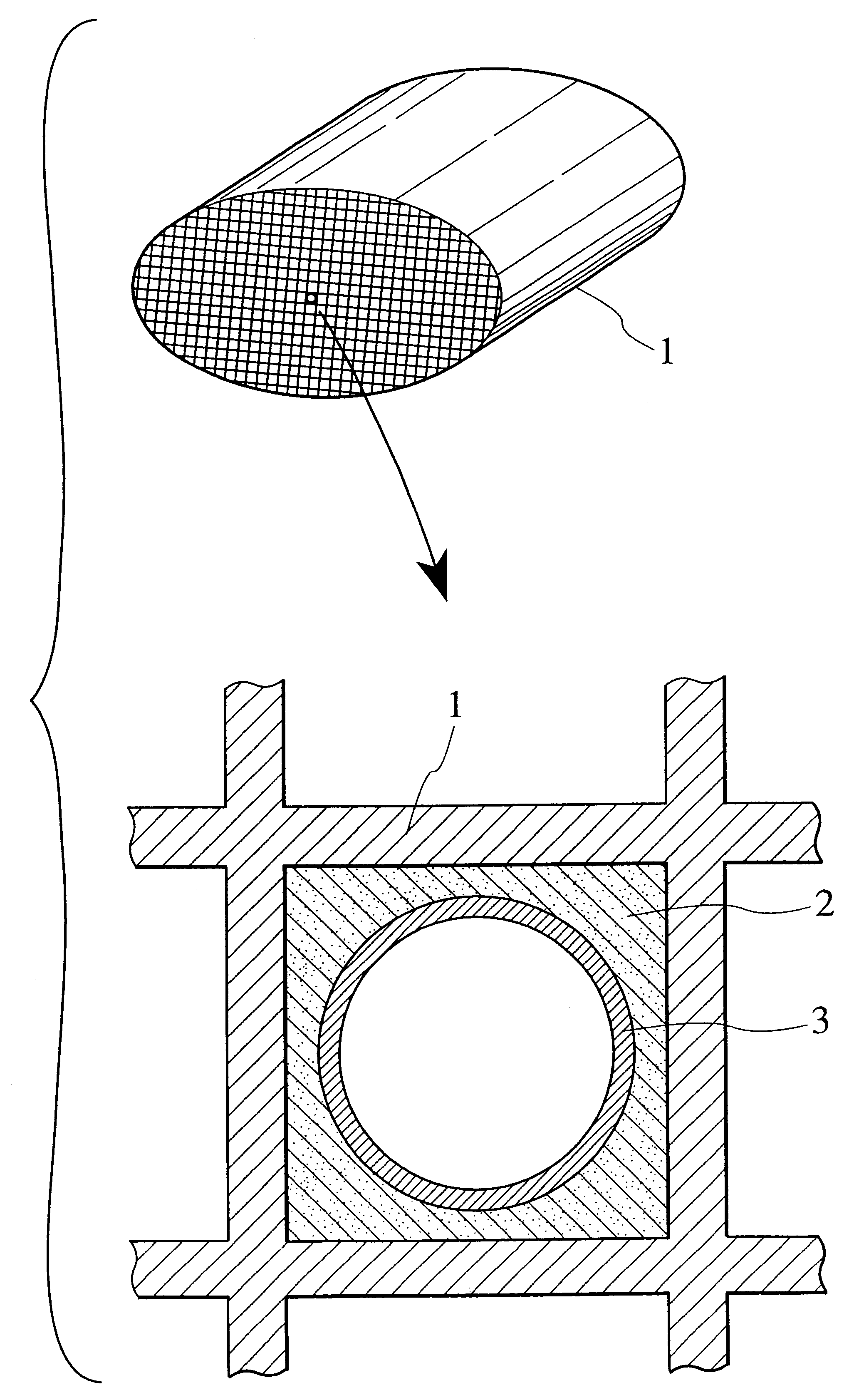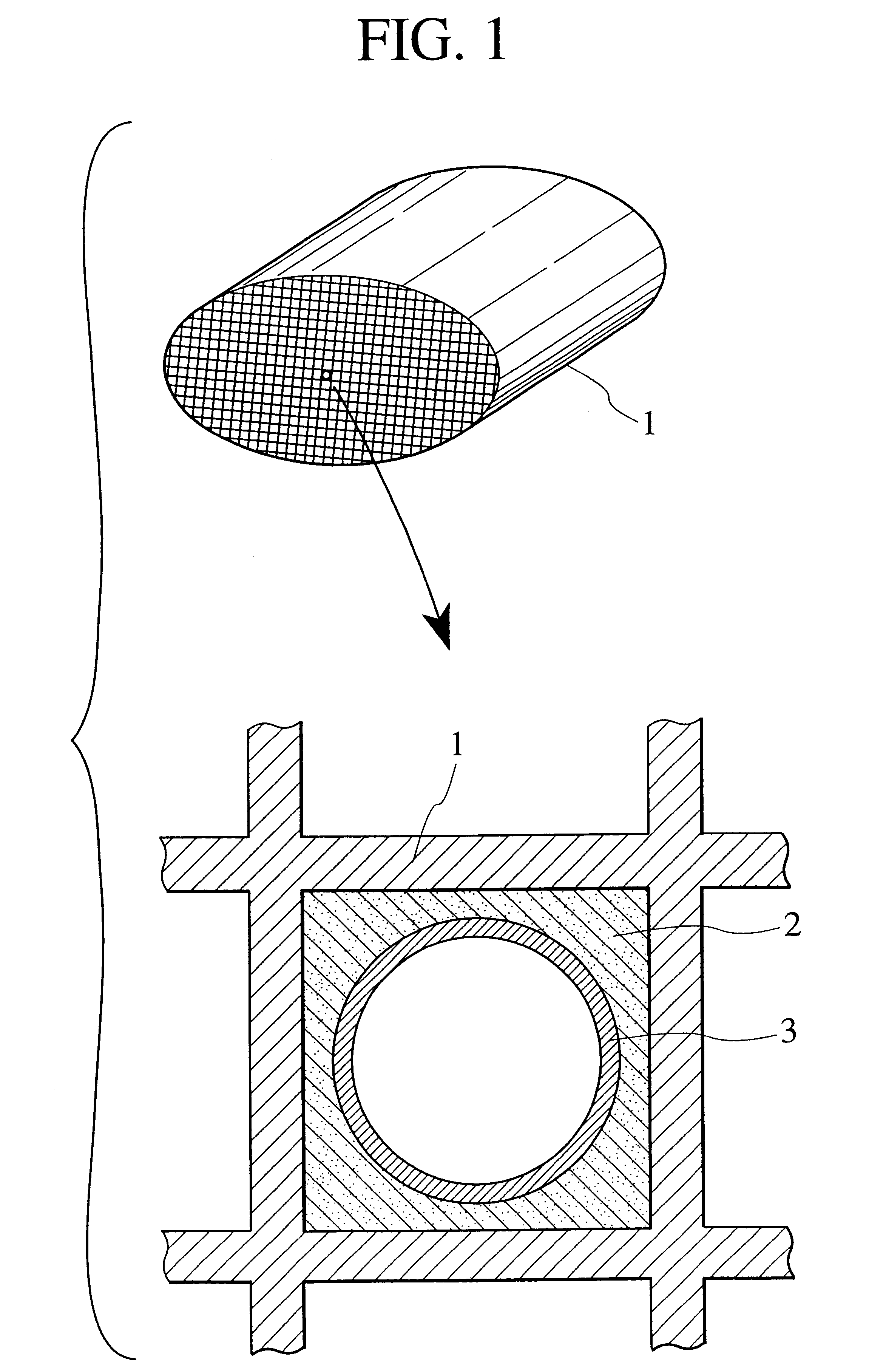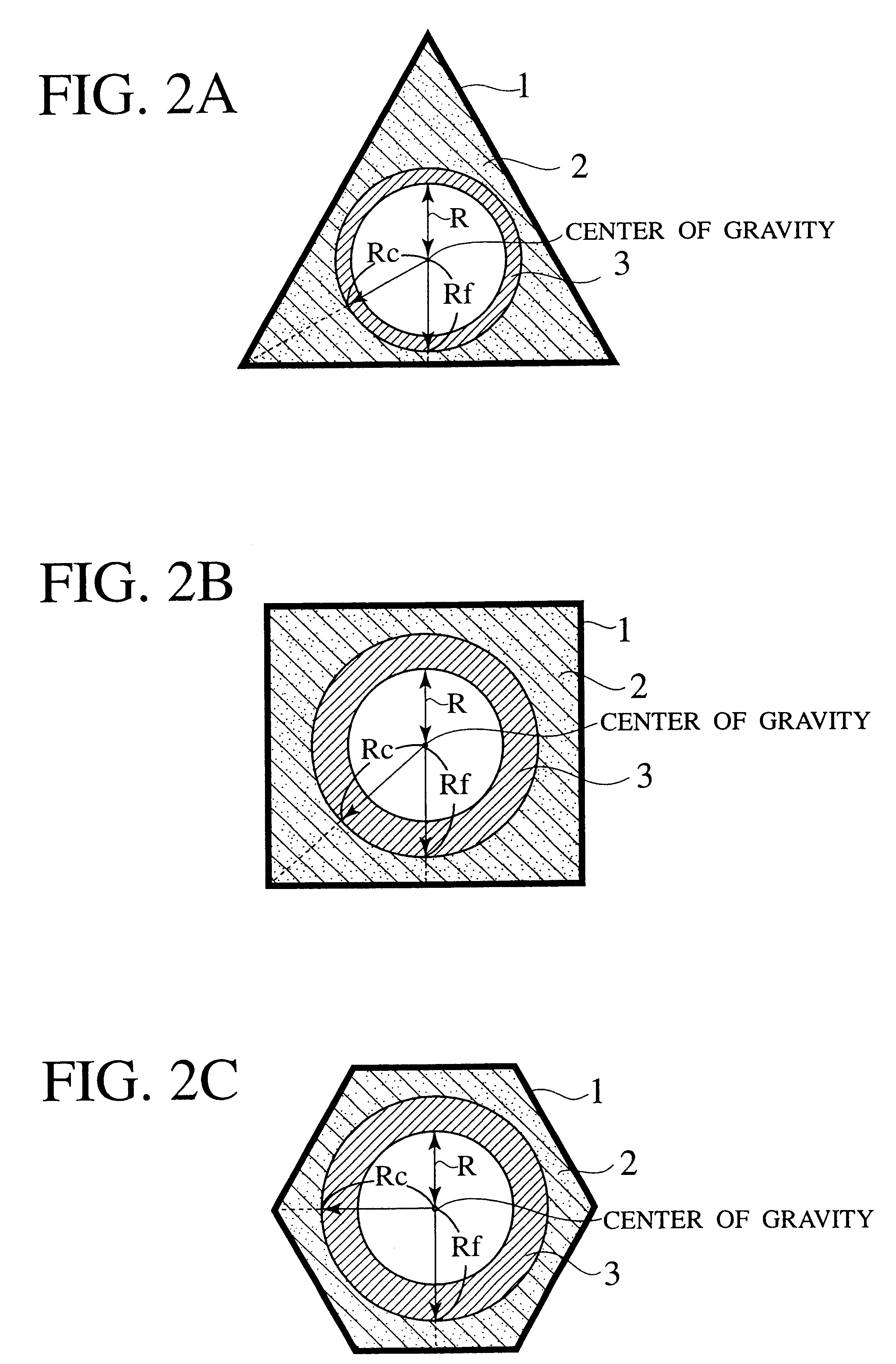Exhaust gas purifying catalyst
- Summary
- Abstract
- Description
- Claims
- Application Information
AI Technical Summary
Benefits of technology
Problems solved by technology
Method used
Image
Examples
example # 2
EXAMPLE #2
As the zeolite added to the slurry for the HC adsorbent layer, the .beta.-zeolite powder (H type, Si / 2Al=75) of 2031 g, the MFI powder (ZSM5) of 226 g, and silica sol (20% solid content) of 1215 g are used. Other conditions are set to the same conditions as EXAMPLE #1, and the exhaust gas purifying catalyst is prepared.
The average thickness of the HC adsorbent layer (zeolite layer) in EXAMPLE #2 is 75 .mu.m at the flat portion of the cell. The ratio Rc / Rf is about 1.6 and the ratio (X-Rc) / (Y-Rf) is about 17.2.
example # 3
EXAMPLE #3
As the zeolite added to the slurry for the HC adsorbent layer, the .beta.-zeolite powder (H type, Si / 2Al=75) of 2031 g, the MFI powder (ZSM5) of 113 g, USY powder of 113 g, and the silica sol (20% solid content) of 1215 g are used. Other conditions are set to the same conditions as EXAMPLE #1, and the exhaust gas purifying catalyst is prepared.
The average thickness of the HC adsorbent layer (zeolite layer) in EXAMPLE #3 is 75 .mu.m at the flat portion of the cell. The ratio Rc / Rf is about 1.5 and the ratio (X-Rc) / (Y-Rf) is about 11.0.
example # 4
EXAMPLE #4
As the zeolite added to the slurry for the HC adsorbent layer, the .beta.-zeolite powder (H type, Si / 2Al=75) of 2145 g, the MFI powder (ZSM5) of 56 g, AlPO.sub.4 powder of 56 g, and the silica sol (20% solid content) of 1215 g are used. Other conditions are set to the same conditions as EXAMPLE #1, and the exhaust gas purifying catalyst is prepared.
The average thickness of the HC adsorbent layer (zeolite layer) in EXAMPLE #4 is 75 .mu.m at the flat portion of the cell. The ratio Rc / Rf is about 1.4 and the ratio (X-Rc) / (Y-Rf) is about 12.6.
PUM
| Property | Measurement | Unit |
|---|---|---|
| Percent by volume | aaaaa | aaaaa |
| Structure | aaaaa | aaaaa |
| Ratio | aaaaa | aaaaa |
Abstract
Description
Claims
Application Information
 Login to View More
Login to View More - R&D
- Intellectual Property
- Life Sciences
- Materials
- Tech Scout
- Unparalleled Data Quality
- Higher Quality Content
- 60% Fewer Hallucinations
Browse by: Latest US Patents, China's latest patents, Technical Efficacy Thesaurus, Application Domain, Technology Topic, Popular Technical Reports.
© 2025 PatSnap. All rights reserved.Legal|Privacy policy|Modern Slavery Act Transparency Statement|Sitemap|About US| Contact US: help@patsnap.com



